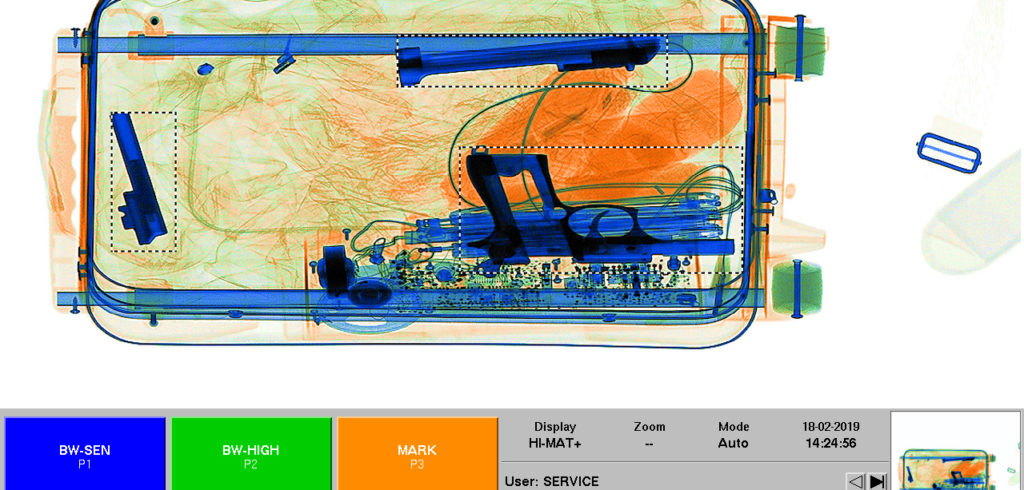Navigating airport security threats has become increasingly complex due to a number of interrelated factors – rising passenger numbers, capacity constraints, emerging security threats and shifts in passenger expectations. Richard Thompson, global market director, aviation, Smiths Detection, shares his thoughts on what 2020 has in store for security.
Existing physical security controls remain essential, but a digital transformation is taking place across the airport ecosystem to ensure that security systems are evolving apace with the security environment – from the roll-out of biometrics to the adoption of automated passenger processes.
In 2020, we will see the pace of airport security solutions innovation ramp up. We will see solutions that harness data, automation and connectivity, introduced in a bid to not only mitigate new security threats and cater to passenger preference, but to better understand, anticipate and shape passenger behaviour.
Biometrics: from check-in to boarding
The use of biometric identification is not yet widespread, but the industry has woken up to its value – especially in the wake of positive passenger attitudes toward the technology. According to IATA’s 2019 Global Passenger Survey, 70% of air travelers are willing to share their biometric identifiers to speed up airport processes.
Facial recognition technology has the potential to optimize airport security and efficiency at many stages in the passenger journey – from check-in to security screening and boarding gates. With verification processes automated and passenger processes expedited, queue times can be reduced, and passengers can move through the airport seamlessly.
Biometrics will likely not be deployed simultaneously across the entire airport ecosystem, but there are security and efficiency advantages for its usage at most touchpoints – whether through biometric enabled e-gates, which could reduce passport fraud, or biometric-enabled risk-based screening, a more cost-effective approach that can minimize time spent at security lines and provide valuable data to airports and airlines.
Risk-based screening: firmly on the fast track
Risk-based screening (RBS) is becoming a reality. RBS adapts the security screening process through individualized risk assessments based on a unique identifier, created using biometrics combined with contextual information – such as ticketing information, ‘watch lists’ or even behavioural patterns. Once the passenger name or advance passenger information is amalgamated with data from third-party sources, a risk score can be generated.
By applying differentiated levels of screening and focusing operator resources on those with higher risk scores, RBS has the potential to reduce the level of screening required at airport security checkpoints and ease the pressure on inbound screening resources. This reduces costs and streamlines the process – while also enabling more effective monitoring and identification of threats. The many operational benefits include better flight connection times, fewer delays and less disruption to the passenger journey.
Additionally, for the first time, sights gathered during the screening process can be analyzed on the airline, flight or destination level to, for example, predict overhead compartment capacity constraints based on the number of trays used per passenger at the checkpoint. Captured information can also be used multiple times across the network, benefiting stakeholders at departure, transit and arrival airports.
 Artificial intelligence: smart scanning
Artificial intelligence: smart scanning
The use of artificial intelligence (AI) in aviation security is rising due to the exponential growth in computing power. AI has the potential to significantly boost the performance of airport screening equipment – enabling new image classification and object recognition functions at the checkpoint, which could pave the way for a more automated, alarm-resolution-only passenger screening.
Smart, adaptable algorithms are now being developed for the automatic detection of an expanding list of dangerous and contraband goods and substances – from weapons to potentially dangerous lithium-ion batteries. These algorithms can provide invaluable support for security operators through accurate detection, reducing the burden on image analysts while increasing efficiency and throughput by scanning thousands of images at speed.
For the foreseeable future, screening still requires some level of human involvement, especially where AI is in its infancy (for instance recognizing some objects with inconsistent shape or form). However, by further developing deep learning techniques, it will be possible to increase the number of dangerous goods on the recognition list.
Open architecture: the integration of products and data
At the heart of the concept of the smart airport is connectivity, which hinges on the seamless integration and interoperability of systems. When it comes to airport security, a more integrated and open security network means that airports can share richer data insights more easily. With more fluid communication, they can also collaborate more effectively in the detection of security threats.
The integration of devices from different vendors, such as tray return systems and x-ray equipment, into one intelligent system is already a reality at many airports. The use of open data formats, such as Digital Imaging and Communication in Security (DICOS), will in future enable the import and export of x-ray images and other relevant data from a range of different equipment. There are however many questions still to be answered, such as how combinations of screening systems with third-party detection algorithms would be certified, compliant and cybersecure. If these issues can be overcome, there is the potential for open architecture to deliver multiple benefits.
So, as we look to 2020, it’s clear that airport security is being driven by three trends: data, connectivity and automation. These types of technologies are undoubtedly becoming central to creating the airport of the future, and therefore maintaining aviation as a transportation of choice for the traveling public. However, with reliance on data, connectivity and automation come new vulnerabilities and having a robust cybersecurity framework in place will be business critical.
It is important therefore that innovation is embraced industry-wide, to ensure that step changes are made with a common set of standards and the framework needed to ensure that the opportunity presented by advancements in technology is fully seized.
Join us at Passenger Terminal CONFERENCE this year for a three-day stream on Aviation Security, Border Control & Facilitation. The full conference program can be found here.

